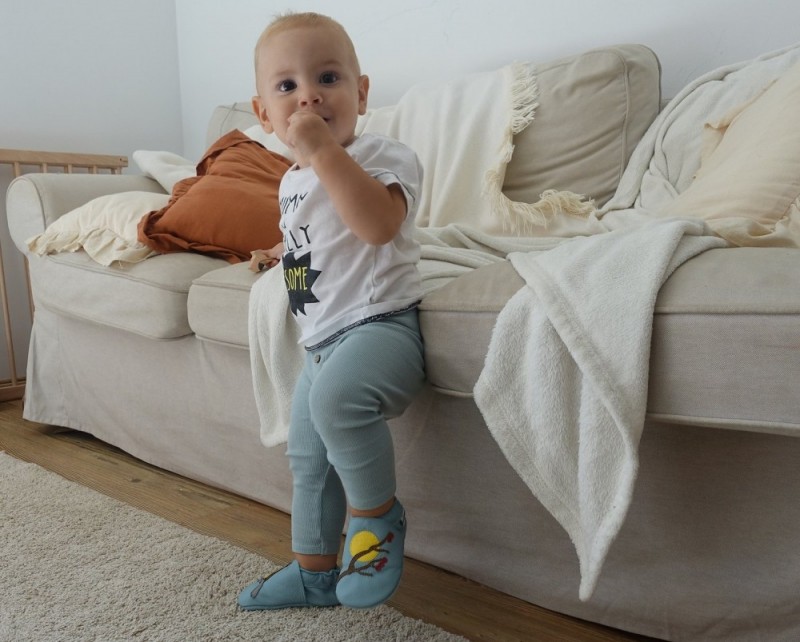The first independent step is not only a defining moment for us parents but also for our children. From this moment on, a child’s life enters a completely new phase. The world suddenly opens up, but at the same time, new and challenging situations arise. As a child progresses in motor development, gradually overcoming gravity, crawling is replaced by climbing, and climbing by standing while holding onto furniture. By the 12th month, the child is already walking while holding onto furniture. In the subsequent period, typically between 12 and 18 months of age, the first steps are taken.
Walking allows for much faster and more efficient movement than previous forms of locomotion. However, it poses a huge challenge to the still-developing nervous system. At this stage, the baby takes relatively small steps on a wide base, spending relatively more time with feet on the ground and less time in the air. The walking pattern is still far from that of the parents. The adult foot arches have not yet developed, and the baby’s sole is flat.
Following the period of standing up, there is a burst of development in the nervous system. During the first 3-6 months of learning to walk, alongside the maturation of the nervous system, practicing walking is crucial. At this stage, the baby often falls but can already stand up independently without assistance. This period enhances the baby’s coordination, balance, strength, and endurance. Walking barefoot primarily aids in this process; the baby needs to feel the ground and its irregularities. This is when the foot muscles strengthen the most, eventually forming the appropriate arches and promoting healthy posture in the long run.
Therefore, it matters what kind of shoes we put on our baby’s feet. It is essential to choose footwear with a soft, thin, flexible sole that does not slip. At the same time, it should protect the child’s feet from the challenges of the outside world. It is also important to note that during this period, many children walk with their feet turned inward (or outward) or frequently tiptoe to ensure balance and coordination for walking. These variations should not be considered abnormal during this stage. A good shoe allows the toes, sole, entire foot, and ankle to move freely.
From an orthopedic perspective, Liliputi soft-soled shoes and sandals are ideal for children, as they support the natural development of the foot and offer the benefits of barefoot movement.
Note:
In light of the latest research, shoes can be seen as clothing primarily meant to protect our feet from the unfavorable properties of the ground (rough surfaces, slipping) and the challenges of weather, but they should not alter posture, for example, by raising the heel. They should allow the toes to spread fully, thus ensuring the natural movement of muscles and aiding the effective functioning of foot muscles. This approach is represented by “barefoot” shoes, including Liliputi. After further consideration of these principles, some shoe trends design adult shoes with thin, flexible, foldable soles to closely mimic barefoot walking.
Dr. László Cs. Frank
Pediatric Orthopedic Surgeon
Heim Pál National Institute of Pediatrics



Leave Comment
You must be logged in to post a comment.